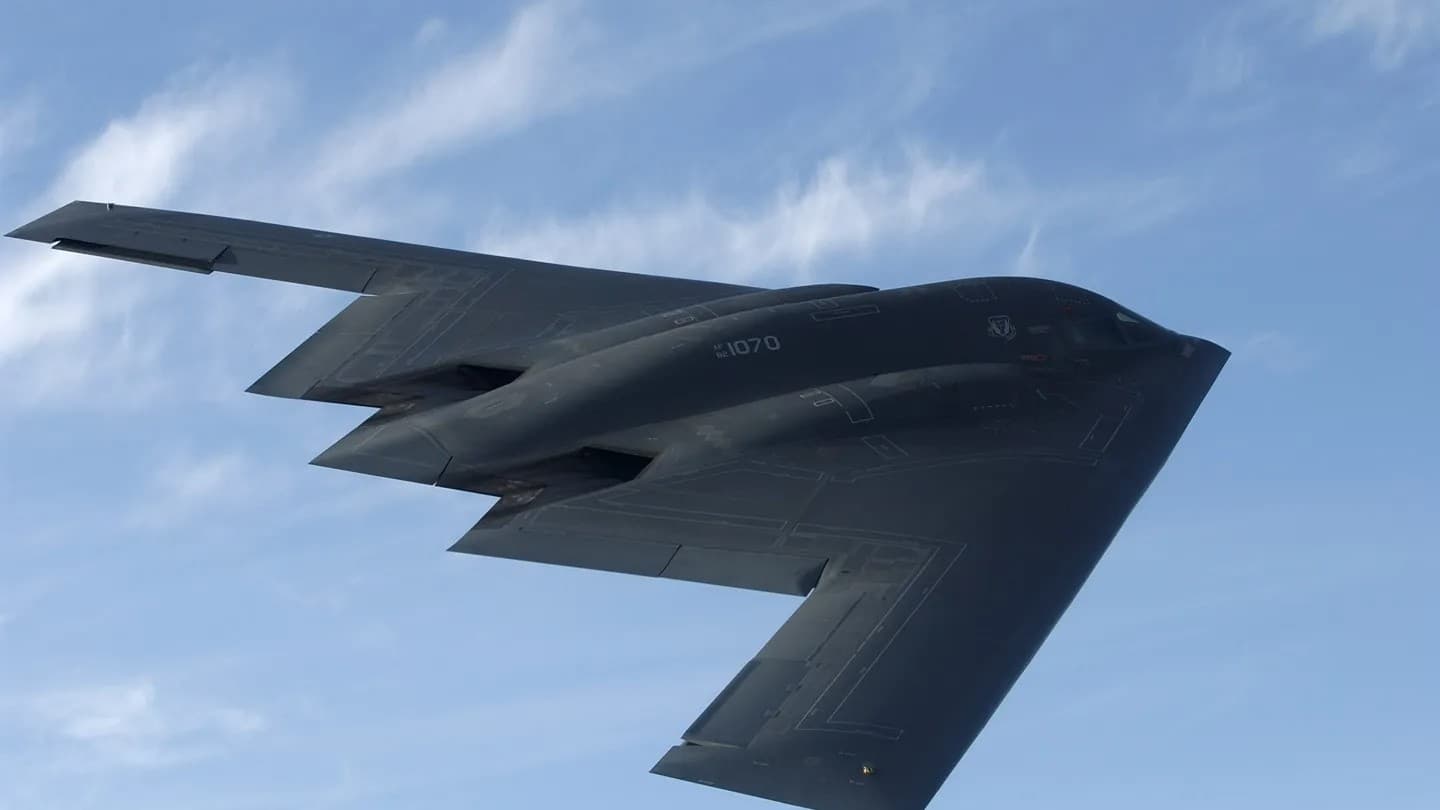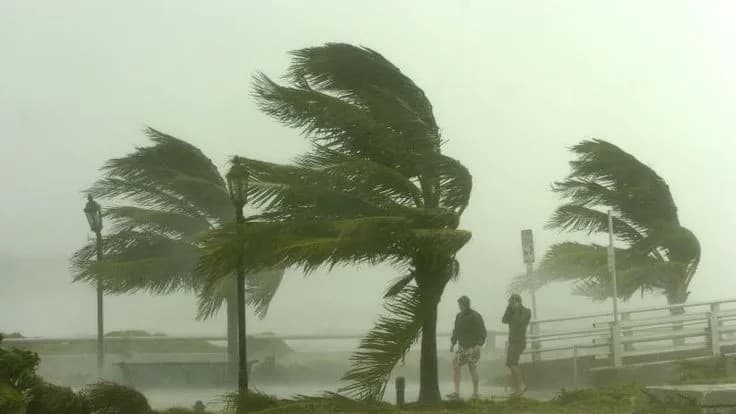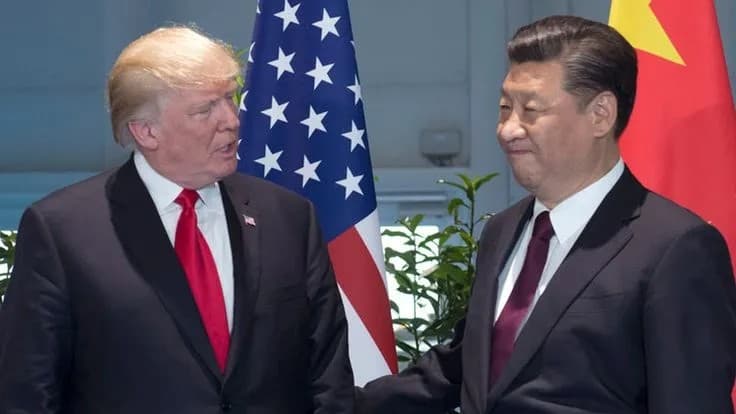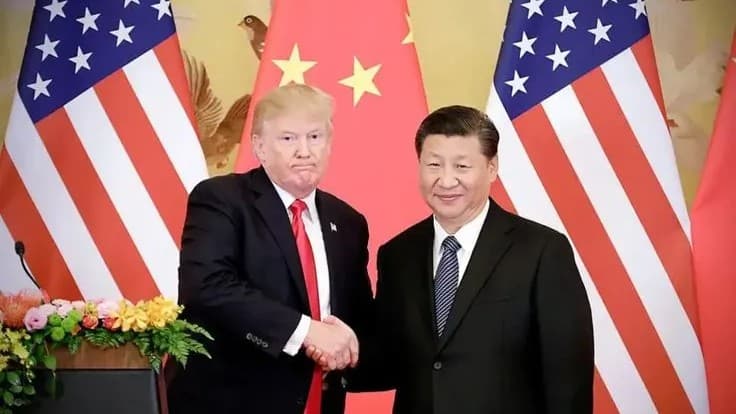Global Thunder 26 – U.S. Nuclear Triad Test Sends Shockwa...
The U.S. Strategic Command launched Global Thunder 26 on Oct. 21, 2025, deploying the full spectrum of America’s nuclear triad—land‑based missiles, strategic...

The United States Strategic Command (US STRATCOM) sounded the trumpet for 'Global Thunder 26' on October 21, 2025. As every year, this campaign sees the full strength of America’s nuclear triad—missiles, strategic bombers, and submarines—in action. The timing and context of this exercise are especially sensitive due to:
- The Russia-Ukraine war shaking all of Europe.
- China's continual power display in Taiwan and the South China Sea.
- Western nations hinting at new strategic policies against Russia.
Over 15 countries’ officials, military experts, and international monitoring agencies closely watch every moment of this exercise.
Strategy and Technology Behind Global Thunder
Global Thunder simulates real nuclear war scenarios featuring:
- Highly advanced bombers like the B-2 Spirit and B-52 Strat fortress performing rapid, close-interval takeoffs and combat missions.
- SSBN submarines hidden deep under oceans, ready to retaliate.
- Intercontinental Ballistic Missiles (ICBMs) capable of destroying targets thousands of kilometers away within minutes.
- Battle-tested national command and control systems, cyber defense, emergency management, and logistics.
Learn more:
Complete History and Annual Program of Global Thunder
Russia-China Response: A New Phase in Nuclear Balance
Both countries consider this exercise a direct threat to global strategic stability.
- Russian defense experts warn that should the Western bloc showcase nuclear strength, countermeasures including new missiles, submarines, and advanced radar will be developed.
- China recently announced its H-20 stealth bomber, DF-41 hypersonic missile, and naval drills.
- Both nations launched joint ‘War Games 2025,’ testing counter-strike, anti-area defense, and global deterrence algorithms.
Read more:
Business Insider: China-Russia Defense Pact
Russia-China Military Drills Youtube Analysis
B-2 Spirit: America’s ‘Invisible Destroyer’
The B-2 Spirit stealth bomber is the world’s most secretive, deadly, and costly strategic bomber. Features include:
- Stealth design to evade over 90% of enemy radar.
- A nonstop range of 11,000 km and operational ceilings of 50,000 feet.
- Ability to carry up to 16 B61 or B83 nuclear bombs, or two GBU-57 bunker busters.
- Piloted by just two crew members.
- Unit cost over $2.1 billion.
Explore further:
U.S. Air Force B-2 Spirit Fact Sheet
U.S. Submarines: War’s Hidden Fortresses
American SSBN and SSN submarines are core to nuclear deterrence:
- Capable of hiding underwater for weeks/months without surfacing.
- Ready to launch retaliatory strikes anywhere globally.
- Difficult to track due to silent engines, special coatings, and radar invisibility.
Details:
STRATCOM Global Thunder and Submarine Drills
UK Defence Journal on U.S. Navy
Nuclear Missiles: New Level of Threat
Major powers USA, Russia, China, India, and Israel have modern missile defense systems for intercepting and counter-striking nuclear attacks; however, their success is not guaranteed in all scenarios. Defense mechanisms include missile defense horizons, ballistic missile flight path tracking, chemical-radiation detection, layered radar, and cyber protection.
Ongoing international treaties aim at nuclear non-proliferation and disarmament to prevent escalation.
Deep dive:
Comparative Missile Defense Report 2024
Technological and Strategic Innovations
Recent years have seen hundreds of innovations: small modular reactors, AI radar, hypersonic prototypes, and neutron scanning. The USA, Russia, and China consistently test new tech through military drills.
Tech and future reports:
Modular Nuclear Reactor Report
World Nuclear Industry Status 2024
Humanitarian, Social, and Environmental Concerns
Fear from nuclear drills and tests affects civilians, environments, and humanity at large. The Hiroshima-Nagasaki bombings of 1945 still haunt the world, causing long-lasting radiation harm.
International bodies continually warn: "There are no winners in nuclear war."
Eyewitness resources:
Global Power Balance, Law, and Military Calculations
Nuclear exercises also examine economic, political, and legal arenas. Ukraine’s nuclear facilities remain a European concern. Exercises like Global Thunder influence defense, diplomacy, and geopolitics strategy.
Frequently Asked Questions (FAQ) about Global Thunder 26
Q1: What is Global Thunder 26?
A: Global Thunder 26 is the United States Strategic Command’s annual large-scale nuclear command and control exercise. It involves training and testing the readiness of America’s nuclear triad—strategic bombers, intercontinental ballistic missiles (ICBMs), and submarine-launched ballistic missiles (SLBMs)—under simulated nuclear war conditions.
Q2: When does Global Thunder 26 usually take place?
A: The exercise typically takes place in October or November each year and runs for about 10 days.
Q3: Why is Global Thunder important?
A: It ensures that the U.S. nuclear forces are always ready to respond effectively in a nuclear conflict, maintaining strategic deterrence and reassuring allies worldwide.
Q4: Which units participate in Global Thunder 26?
A: The participants include USSTRATCOM components, subordinate units, strategic bomber wings, missileers managing ICBMs, submarine crews operating SSBNs, as well as command and control teams and support personnel.
Q5: Does Global Thunder 26 respond to specific world events?
A: No, this annual exercise is held regularly to maintain operational readiness and is not a response to any specific international incident.
Q6: What kind of activities are simulated during the exercise?
A: Simulations include rapid bomber takeoffs, missile launch rehearsals, submarine missile prepares, command and control message transmissions, logistics coordination, airfield defense, and casualty management.
Q7: How does Global Thunder affect local military bases?
A: During the exercise, increased flights of bombers and other aircraft can lead to longer wait times at base gates and can impact some base support operations.
Q8: How do countries like Russia and China react to Global Thunder exercises?
A: They closely monitor these drills as they send strong signals about U.S. nuclear readiness and strategic intent, often prompting them to update their own military capabilities.
Q9: What is the role of B-2 Spirit bombers in the exercise?
A: B-2 Spirits perform stealth bomber missions, practicing rapid, minimum-interval takeoffs and complex combat scenarios to demonstrate their strategic strike capability.
Q10: What is the significance of nuclear submarines in this exercise?
A: SSBNs provide a hidden, survivable leg of the nuclear triad, capable of launching missiles undetected from underwater anywhere in the world.
Q11: How does Global Thunder fit into the bigger picture of global security?
A: It functions as part of the broader nuclear deterrence posture, reassuring allies and deterring nuclear aggression by maintaining a credible and ready force.
Q12: Can the public or media access details about Global Thunder 26?
A: While many operational details remain classified for security, official summaries and statements are publicly released, offering insight into the exercise's purpose and scope.
Q13: Are there any environmental or humanitarian concerns associated with nuclear exercises?
A: Yes, international organizations stress the severe consequences of nuclear weapon use, and continuous efforts exist to maintain global peace and prevent escalation
Conclusion
As the world witnesses an unprecedented public, expert, and governmental discourse on nuclear arms balance, tech advancements, and security threats, these war games’ impacts might echo for decades in geopolitics, humanity, and environment alike.
Click below for detailed sources and reports to explore more:
- US STRATCOM Exercise Details
- Navbharat Times Coverage
- Wikipedia: Global Thunder
- Business Insider on China-Russia Military Pact
- YouTube Analysis of Russia-China War Drills
- AF.mil B-2 Fact Sheet
- NDTV Special on B-2 Spirits
- 2025 World Nuclear Notebook
- 2024 World Nuclear Industry Status
- ICRC on Humanitarian Impact of Nuclear Weapons
- NSArchive Atomic Bombings
- National WWII Museum Hiroshima Article
- Ukraine Nuclear Power Status
Dhananjay Singh
Professional Content Writer, Researcher & Visionary Storyteller
"तरक्की को चाहिए नया नज़रिया—और यह नज़रिया शब्दों से शुरू होता है।"
More from Dhananjay Singh →

